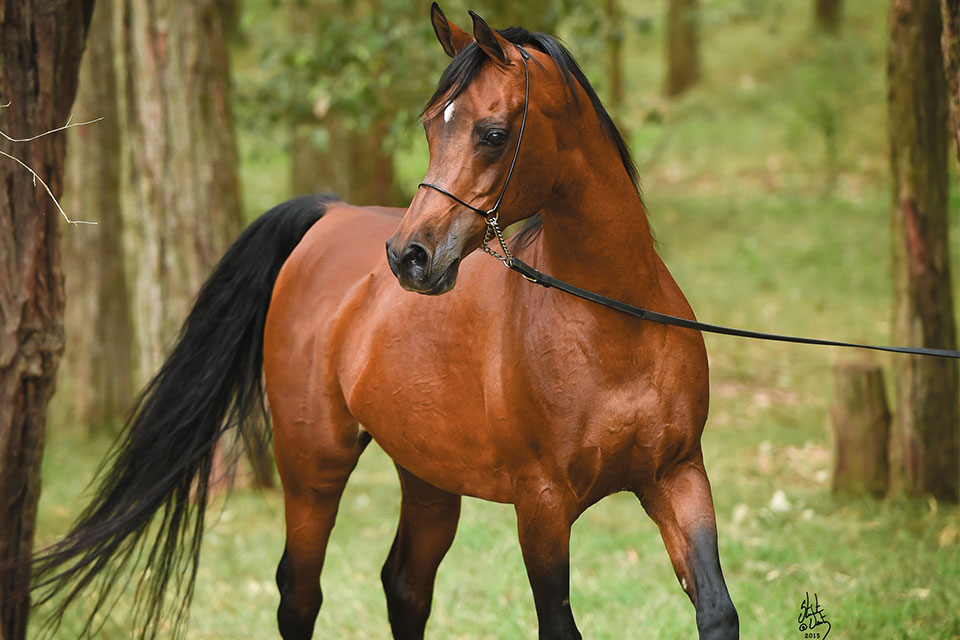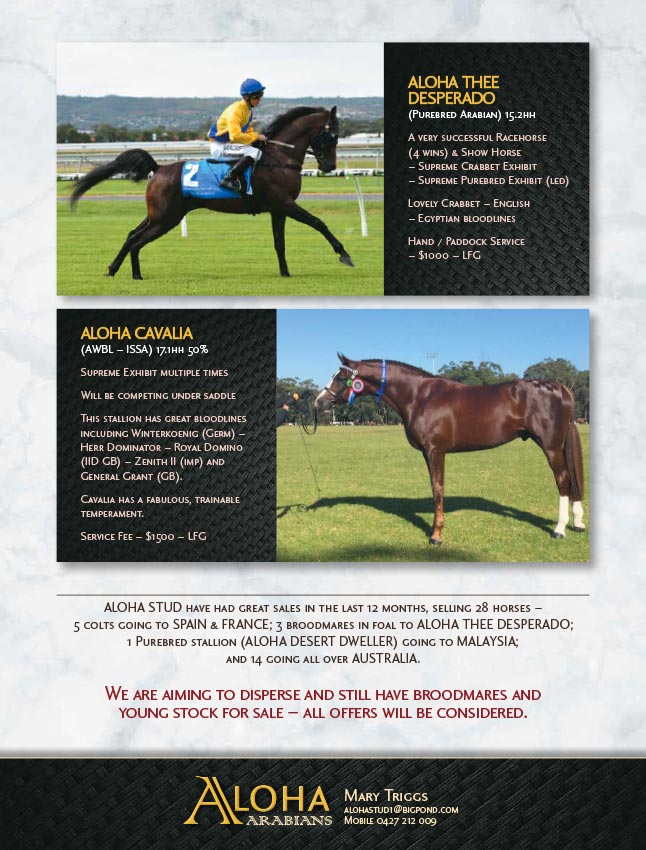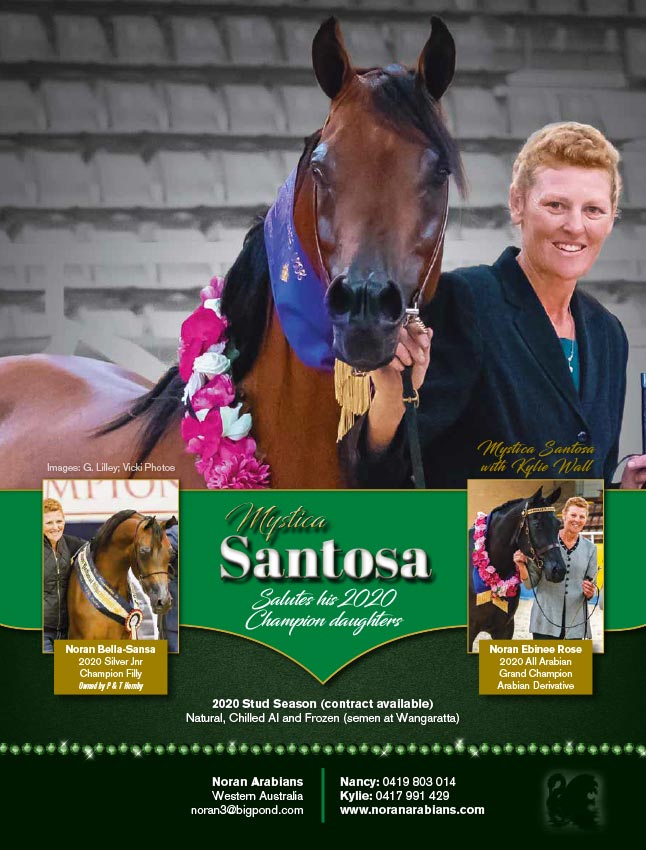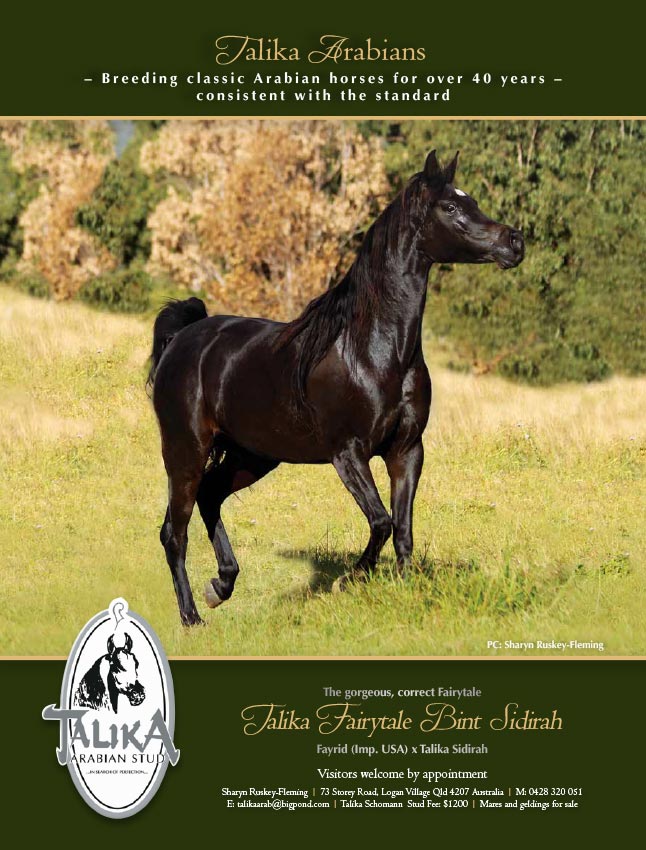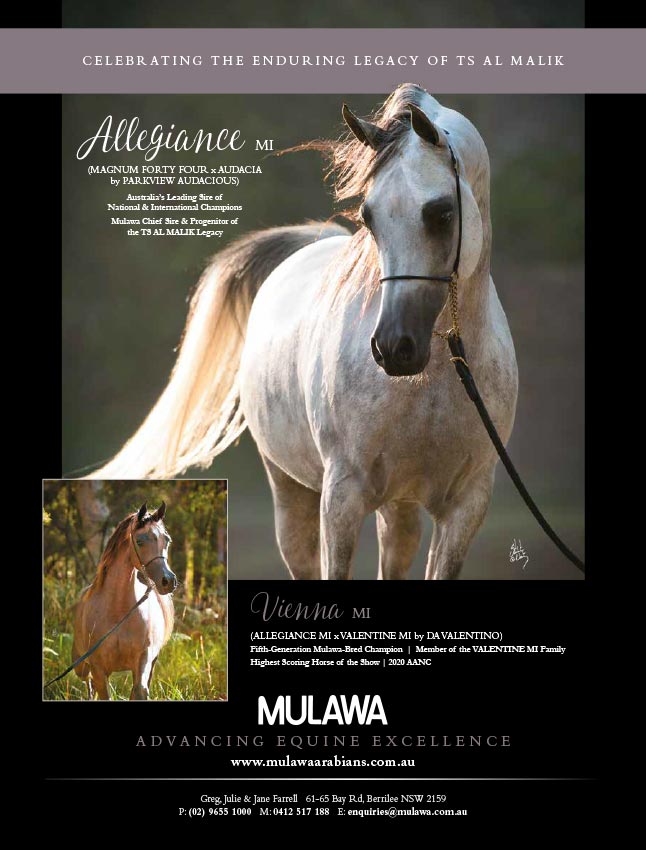
Bygone Era – Riffayal & Sind
July 28, 2017
Where Are They Now?
August 10, 2017Guttural Pouch Mycosis
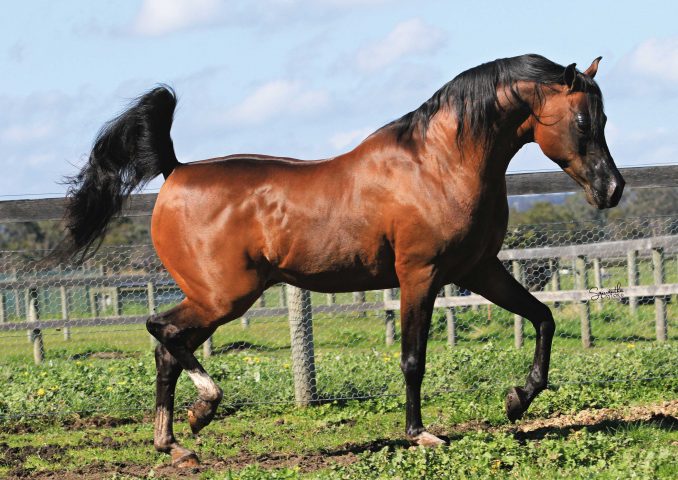
Shiranna Kharbon Kisses before he fell ill
By Sheree Taylor
On February 24, 2015 our veterinarian Hugh Cathels was attending one of our horses at Shiranna Arabians and I questioned him about blood found a few days earlier on my stallion’s gate and in his feed bin. It was a mystery as I had checked him over and could not find where it came from.
After the visit Hugh rang me saying he thought my Arabian Pony Shiranna Kharbon Kisses (aka Cougar) had Guttural Pouch Mycosis. I needed to get him urgently to the University of Melbourne Equine Centre Werribee Veterinary Hospital, as he needed an upper respiratory tract endoscopy to confirm the diagnosis. Apparently the next bleed could have been fatal. He also prepared me for the costs involved if he needed an operation, which he said worse case scenario could be similar to the cost of colic surgery and it was!
We arrived at the vet hospital around 6pm and the veterinarians did a quick blood test, weighed and scoped him. They found the fungus to be extensive. Guttural Pouch Mycosis is a serious disease and is caused by a fungal infection that imbeds itself in the wall of the guttural pouch over an artery. With Cougar it was his carotid artery. The infected artery starts to bleed and it’s this bleeding that can literally cause the horse to bleed to death in the event of the blood vessels within the pouch rupturing. Examples of the types of fungal infection are aspergillus, candida and penicillium. If the disease is not treated, the fungal infection can cause damage to the nerves in the area causing permanent damage – for example, affecting the horse’s ability to swallow.
Vets have no real idea how it is that one horse gets it and another does not, but it’s more likely to occur in humid areas. I have no idea how long Cougar had this fungus growing as he looked fantastic at the stallion parade he attended six months prior to the bleed happening and showed no signs other than a slight discharge from his right nostril, which was very mild and intermittent.
My daughter Samantha and I were at Werribee for the Aussie championships on February 27 with our team of five ponies when Cougar underwent an operation that took over five hours. The operation carried huge risks even for a fit, young in-work racehorse but Cougar was 14 and unworked. He was at more risk but we had to take that chance! One veterinarian said it was the worst case she had ever seen and not all the horses in the other cases survived. Coil embolisation of the internal carotid artery was attempted, however, due to Cougar’s unusual arterial anatomy this technique was aborted. The internal carotid artery was tied off and a balloon catheter placed in his facial artery, which was left there for almost four weeks.
Once I started thinking back to the lead up of the bleed, I realised Cougar had a bit of a runny nose off and on in the right nostril. He had lost some weight and his coat was not his usual shiny, iridescent colour and was very dry. His whinny, when he called out, had changed in the week leading to his operation.
We picked Cougar up from hospital on March 9. He was on bute (Phenylbutazone), antibiotics and antifungal meds (Fluconazole) for two months. Even though he had the arteries tied off, he was still at risk of nose bleeds, including fatal haemorrhage. He had to be kept quiet and confined to a stable for at least a month. Lucky he is a well-behaved stallion.
Stitches were removed March 13 and the catheter removed on the 25th. On March 26, after a month of being confined, Cougar finally had his first run in a paddock again.
He was happy being the centre of attention and it showed on the scales just how relaxed he had become, so he was placed on a diet much to his disgust. We had to take Cougar to hospital every two weeks to be re-scoped and sometimes to be flushed until the start of May, but at least the meds did their job – the fungus has gone.
We found he had nerve damage to his larynx and one side was not working, which meant he might have trouble swallowing. He did have nerve damage to the right side of his face and ear for a while but that’s fine now. I am still careful what I feed him in case of choke.
February 3, 2016 Cougar returned to the vet hospital for one last scope and was given the all clear, almost 12 months on and no sign of any fungus coming back. I am so lucky to still have him!




